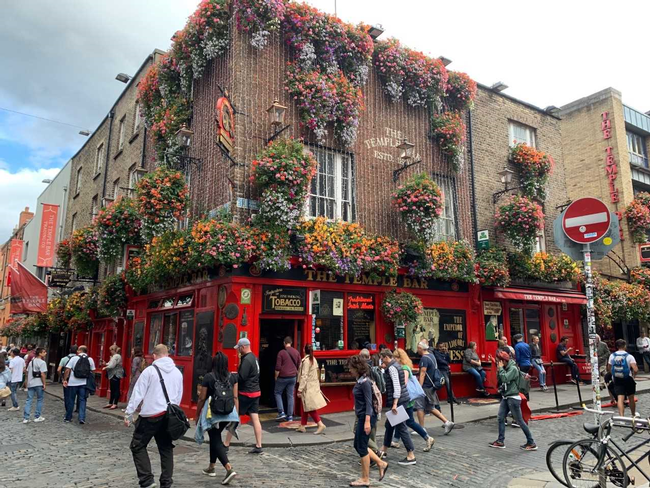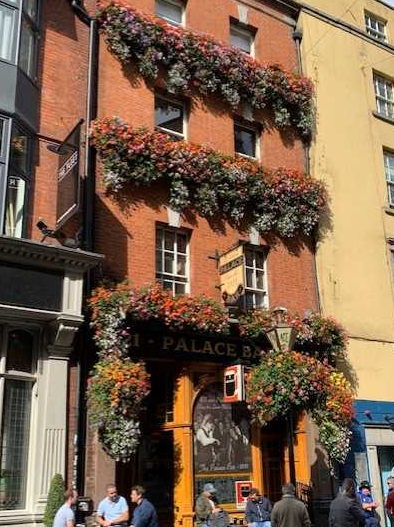
European Flower Boxes Provide Beauty and a Welcoming Ambiance. Many European countries pride themselves on colorful displays of geraniums, ivy, and other flowers adorning window planters of hotels, restaurants, and even train stations. I had always marveled at their use, particularly by Austrians and Germans whose love of these colorful planters seems equal to their affinity for weiner schnitzel. What a surprise to find them plentiful in Ireland, as well! As I walked through Dublin (Read More) the last few days I noted the great care that both shopkeepers and plant care companies exercise in tending these lovely and delicate works of art. I walked by the same restaurant one morning and again in the late afternoon to find the same two horticulturists tediously fussing over a dozen or so planters sporting bright hues of blues, yellows, and reds with over twelve varieties of annuals. With plentiful natural rainfall, most are not on irrigation systems which reduces maintenance costs and time. I asked ‘Carol' (one of the crew) what she liked most about her job and she quickly answered “seeing smiles on so many faces from just seeing the flowers”. Well said! I hope these photos help brighten your day as well.

- Select a location where you can truly enjoy the fruits of your labor.
- Select a box that has drainage holes and line wooden boxes with plastic (punch holes to match drainage holes) to prevent chemical leakage from certain types of wood.
- Draw a rough sketch of what you hope your final box will resemble once mature.
- Select annuals that won't outgrow the space and that tolerate the sunny or shady microclimate and that require similar amounts of water (eases hand-watering).
- Select plants with a wide array of colors and forms. Adding trailing varieties with upright plants enhances the beauty and adds interest.
- Fill the planter box half-way with loose garden soil or compost. An alternative is to use potting soil. Avoid heavy soils with poor drainage. Moisten the soil until it resembles a well rung-out sponge.
- Take one last look before you plant by carefully setting your plants on top of the soil. Consider the final size of the mature plants to avoid overplanting.
- Once you're satisfied with your design, plant your selections at the same depth they were in their pots, gently tamping the soil around them for support.
- Thoroughly water the plants, making sure water drains through the holes.
- Water as often as needed the first few weeks after planting since container boxes dry out faster than garden plants. The frequency of irrigation can decrease as plants mature.
- Hand-weed and apply fertilizer as needed.